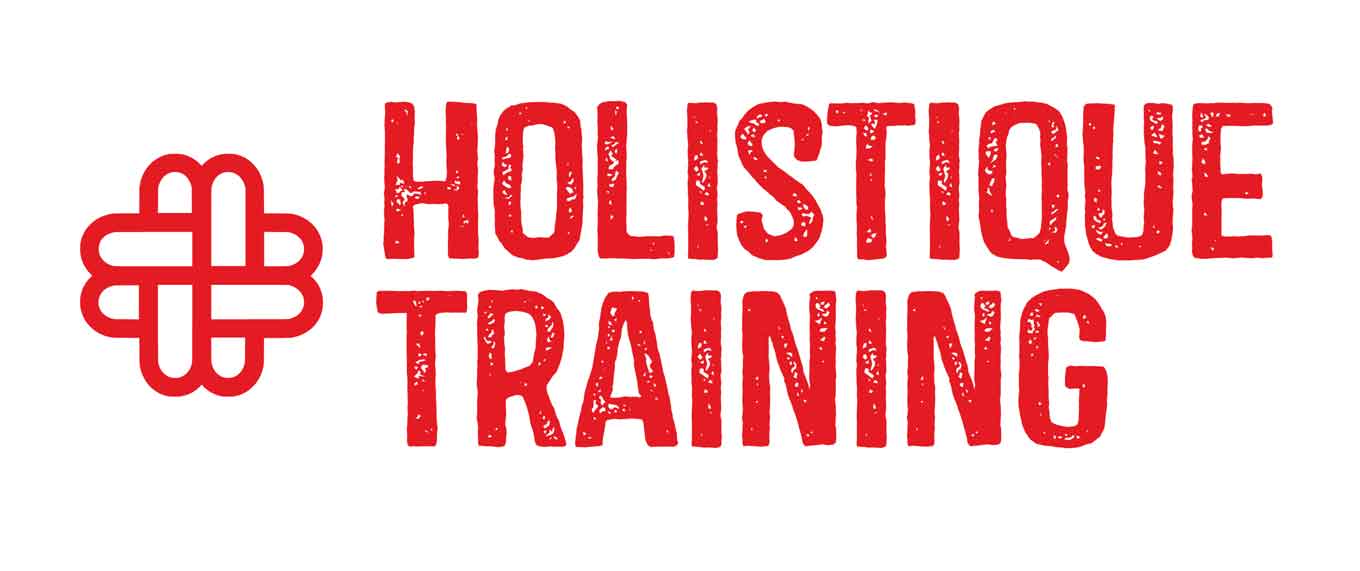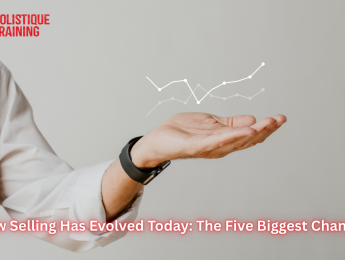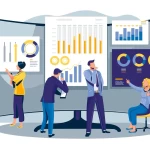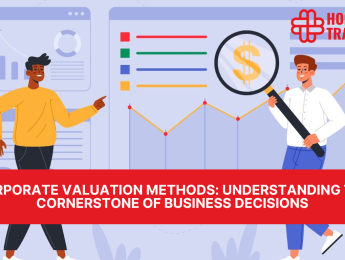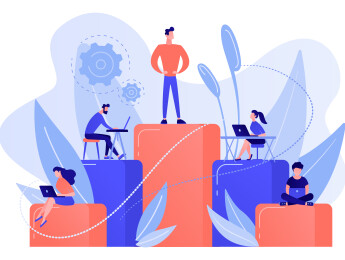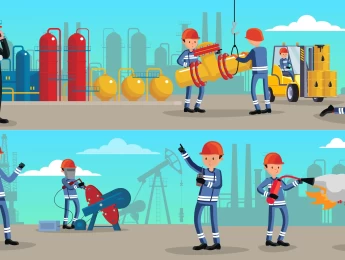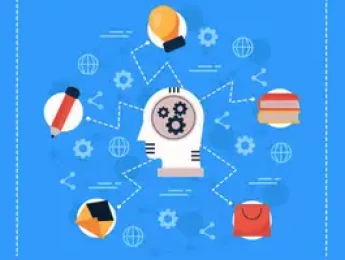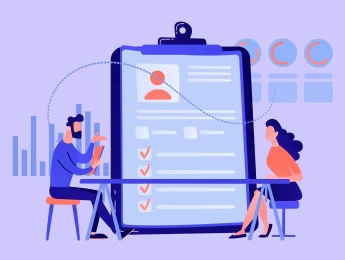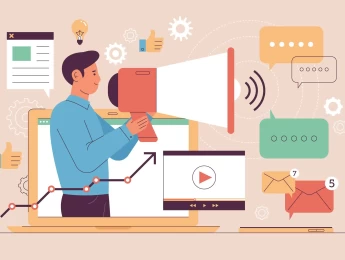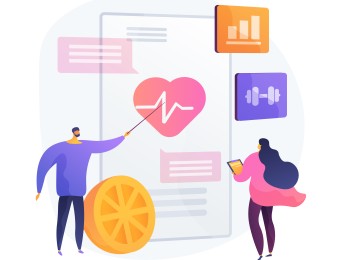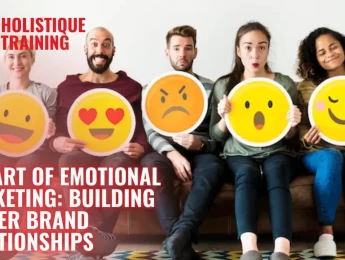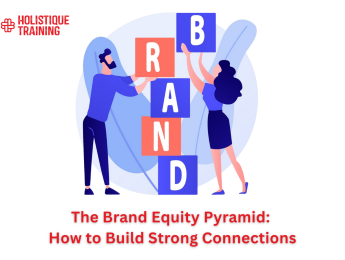- Table of Contents
- Introduction
- From Pitches to Partnerships: The Shift in Buyer Expectations
- The Five Biggest Changes in Selling
- 1. Buyers Are More Informed Than Ever
- 2. The Shift from Transactional to Relationship Selling
- 3. Technology Is Now a Core Selling Tool
- 4. Data-Driven Selling Replaces Gut Instinct
- 5. The Rise of Remote and Hybrid Sales Models
- The Rise of Digital-First Selling
- Data-Driven Decision Making in Sales
- The Empowered Buyer: Access to Information Has Changed Everything
- Remote Selling and the Future of Work
- Training and Upskilling: What Modern Sales Teams Need
- A. CRM Proficiency
- B. Digital Communication
- C. Social Selling
- D. Analytical Thinking
- E. Adaptability and Learning Agility
- Metrics That Matter Now: From Quotas to Customer Success
- 1. Customer Retention Rate
- 2. Net Promoter Score (NPS)
- 3. Customer Lifetime Value (CLV)
- 4. Onboarding Success Rate
- Conclusion: Adapting to the Future of Sales
Introduction
Over the past decade, the world of sales has undergone a seismic transformation. The days of pushy pitches, cold calls, and one-size-fits-all presentations are quickly fading. In their place, we see the rise of informed buyers, data-powered decision-making, and a new emphasis on value-driven relationships.
This shift hasn’t happened in a vacuum. Technological advancements, evolving buyer expectations, and the global pivot to remote work have all played crucial roles. Today, customers have more choices, more power, and more information than ever before. As a result, they demand more personalized, authentic, and insightful interactions. Salespeople can no longer rely on old-school tactics. Instead, they must adopt a more strategic, tech-savvy, and customer-centric approach.
Companies that embrace this evolution are thriving. They’re investing in sales enablement tools, equipping their teams with digital skills, and focusing on long-term customer success instead of short-term wins. The future of sales is consultative, data-informed, and hyper-adaptive.
In this article, we will explore the five biggest changes in selling that every professional and business leader must understand. From changing buyer expectations to the rise of remote selling and the importance of upskilling, we’ll uncover the trends reshaping the sales landscape and how you can stay ahead.
From Pitches to Partnerships: The Shift in Buyer Expectations
Today's customers are not looking for flashy pitches or aggressive closing tactics. They want genuine partnerships. In a world overloaded with options and information, buyers expect brands to understand their challenges, deliver real value, and tailor solutions to their specific needs.
The shift from "pitching" to "partnering" means sales professionals must transition from being product pushers to trusted advisors. This requires listening more than speaking, asking insightful questions, and offering solutions that genuinely solve problems. It's about creating a shared journey toward success.
This new dynamic is especially evident in B2B sales, where buying decisions often involve multiple stakeholders, long sales cycles, and substantial investment. Buyers today are looking for:
- Empathy: Do you understand my unique needs?
- Expertise: Can you help me navigate complex decisions?
- Experience: Have you helped others like me succeed?
The sales process becomes a two-way conversation, not a one-sided monologue. The most successful sellers focus on building relationships, earning trust, and demonstrating long-term value.
Summary Table: From Pitches to Partnerships
Old Model | New Model |
Product-centric | Customer-centric |
One-way communication | Two-way collaboration |
Short-term transaction | Long-term relationship |
Emphasis on features | Emphasis on outcomes and value |
Seller talks, buyer listens | Buyer engaged, seller listens |
The Five Biggest Changes in Selling
In the past, selling was a relatively linear process: salespeople controlled the information, cold calls were common, and closing deals depended heavily on charisma and persistence. But in today’s fast-paced digital world, selling has undergone a fundamental transformation. Buyers are savvier, competition is fiercer, and technology has reshaped every aspect of the customer journey. To succeed, modern sales professionals must evolve, embrace new tools, and develop deeper relationships based on value rather than persuasion.
Below are the five most significant changes that have redefined the sales landscape:
1. Buyers Are More Informed Than Ever
Then: Salespeople used to control the flow of information.
Now: Thanks to the internet, buyers complete 60–70% of their decision-making journey before talking to a salesperson. They research products, read reviews, and compare competitors independently.
What it means: Sales reps must now focus on adding insight, not just information. To stand out, they must educate, guide, and offer value that goes beyond what’s available online.
2. The Shift from Transactional to Relationship Selling
Then: Selling was about quick wins and one-time transactions.
Now: Long-term relationships and customer lifetime value (CLV) are central. Modern buyers expect personalization, follow-up, and ongoing support.
What it means: Sales success depends on building trust and maintaining engagement post-sale. Relationship-focused selling increases retention and referral rates.
3. Technology Is Now a Core Selling Tool
Then: Sales relied on cold calls, in-person meetings, and manual spreadsheets.
Now: Tools like CRM systems, AI-driven analytics, video conferencing, and sales automation have revolutionized the process.
What it means: Today’s sellers must be tech-savvy. Those who master sales enablement platforms, automation tools, and data analytics can scale outreach, personalize pitches, and close deals faster.
4. Data-Driven Selling Replaces Gut Instinct
Then: Many sales strategies were based on intuition or experience.
Now: Teams rely on real-time data, KPIs, and predictive analytics to target the right leads and tailor their approach.
What it means: Sales leaders are expected to monitor metrics like customer behavior, engagement scores, and pipeline velocity. Data empowers smarter decision-making and more efficient resource allocation.
5. The Rise of Remote and Hybrid Sales Models
Then: Sales was heavily face-to-face, with travel and in-person meetings.
Now: Remote selling is the norm. Buyers are comfortable making large purchases over Zoom or email, and sales reps are closing deals from anywhere.
What it means: Virtual communication skills, digital presentation tools, and asynchronous follow-ups (like video messages or personalized email sequences) are essential in today’s environment.
Summary Table: Five Biggest Changes in Selling
Change | Old Model | New Model |
Informed Buyers | Limited access to product knowledge | Buyers research extensively before sales interactions |
Relationship Selling | Focus on one-time transactions | Emphasis on long-term trust and loyalty |
Sales Technology Integration | Manual processes and face-to-face meetings | Automated tools, virtual selling, CRM systems |
Data-Driven Selling | Gut-based strategies | Insights from real-time data and predictive analytics |
Remote & Hybrid Sales | In-person meetings dominate | Remote, flexible, and digital-first interactions |
The Rise of Digital-First Selling
The digital revolution has fundamentally altered how sales interactions take place. From AI-powered CRMs to automated email sequences and virtual meetings, technology now drives every stage of the sales funnel.
Digital-first selling prioritizes convenience, personalization, and speed. Sales reps are expected to reach prospects where they are—often online. Instead of waiting for a meeting, they’re using tools like LinkedIn, Zoom, and HubSpot to connect instantly, share insights, and respond in real time.
A study by McKinsey found that over 75% of B2B buyers now prefer remote human interactions or digital self-service over face-to-face meetings. This preference makes digital fluency a must for today’s sales professionals.
Those who adopt a digital-first approach can:
- Reach more prospects faster
- Personalize communication at scale
- Track engagement and optimize follow-ups
In this new environment, digital is not optional—it's foundational.
Data-Driven Decision Making in Sales
Sales strategies used to be driven by instinct. Now, they're powered by insight. With advanced analytics, AI, and CRM platforms, teams can understand customer behavior, forecast trends, and make precise, data-informed decisions.
Instead of guessing which leads are most likely to convert, reps can prioritize based on engagement history, firmographic data, and behavior patterns. Sales managers can monitor real-time performance metrics and optimize campaigns accordingly.
Here are four pillars of data-driven selling:
- Lead Scoring: Rank prospects based on conversion likelihood
- Sales Forecasting: Predict future revenue based on historical patterns
- Engagement Analytics: See how prospects interact with content and outreach
- Pipeline Visibility: Track deal stages and identify bottlenecks
Summary Table: Data-Driven Tools and Uses
Tool | Purpose |
CRM Systems | Manage contacts, track interactions |
Predictive Analytics | Forecast sales, identify top prospects |
Email/Content Analytics | Optimize messaging based on engagement |
Dashboards & Reporting | Real-time insights for better decisions |
The Empowered Buyer: Access to Information Has Changed Everything
The balance of power has shifted. In the past, salespeople were the gatekeepers of information. Today, buyers conduct their own research, read reviews, watch product demos, and explore competitor offerings well before reaching out.
This means sales reps must bring unique insights and value beyond what a simple Google search can provide. They need to act as consultants who help make sense of complexity, offer clarity, and customize solutions.
Buyers are empowered, but they’re also overwhelmed. The best salespeople cut through the noise and become trusted navigators.
Remote Selling and the Future of Work
The COVID-19 pandemic transformed remote selling from a temporary adjustment into a long-term norm. Sales professionals now engage clients via video calls, digital presentations, and cloud-based collaboration tools.
This shift has made geography irrelevant and opened new opportunities for global outreach. However, it also demands new skills—like screen presence, virtual storytelling, and asynchronous follow-up.
Remote selling offers advantages:
- Reduced travel time and costs
- Faster sales cycles
- More flexible schedules for teams and clients
Still, it requires structure, discipline, and strong digital communication. Sales leaders must support reps with virtual selling playbooks, tech training, and consistent team check-ins.
The future of sales is hybrid—combining the efficiency of digital with the empathy of human connection.
Training and Upskilling: What Modern Sales Teams Need
The evolving sales landscape demands continuous learning. Static skillsets are no longer enough. Teams must upskill to remain relevant and competitive.
A. CRM Proficiency
Mastering platforms like Salesforce, HubSpot, or Zoho CRM is essential. These tools organize contacts, track deals, and store interaction history. Reps who know how to segment data, schedule follow-ups, and automate workflows sell smarter and faster.
B. Digital Communication
From personalized email campaigns to engaging Zoom pitches, digital communication is a core sales competency. Reps must learn to write compelling subject lines, maintain tone consistency, and deliver confident virtual presentations.
C. Social Selling
Platforms like LinkedIn have become key lead-generation tools. Reps should know how to:
- Build a personal brand
- Share valuable insights
- Engage prospects through content and direct messaging
D. Analytical Thinking
Salespeople must be comfortable reading dashboards, interpreting engagement data, and acting on insights. Understanding which touchpoints drive conversions enables smarter, data-driven decisions.
E. Adaptability and Learning Agility
With new tools and trends emerging constantly, the best sales reps are lifelong learners. They stay curious, embrace change, and invest in personal development.
Organizations must support this through ongoing training programs, peer learning, and access to expert-led courses.
Metrics That Matter Now: From Quotas to Customer Success
Traditionally, sales performance was measured by one primary metric: quota attainment—how much revenue a salesperson generated within a given period. Hitting quotas meant success, bonuses, and recognition, while missing them meant falling short. But in today’s evolving sales environment, this narrow focus is no longer sufficient.
Modern businesses understand that success isn’t just about closing deals, but about building long-term, meaningful relationships with customers. As a result, sales teams are increasingly evaluated using a broader set of performance indicators that reflect customer satisfaction, loyalty, and value over time.
Below are four of the most important modern sales metrics and why they matter:
1. Customer Retention Rate
This metric shows how well a company is able to keep its existing customers over time.
A high retention rate signals strong customer satisfaction and loyalty, while a low rate may indicate deeper issues in service or product experience.
Why it matters: It costs 5–7 times more to acquire a new customer than to retain an existing one.
2. Net Promoter Score (NPS)
NPS measures customer loyalty by asking: “How likely are you to recommend our company to a friend or colleague?”
Respondents are categorized as Promoters, Passives, or Detractors.
Why it matters: A high NPS means customers are more likely to refer others, boosting organic growth and reducing marketing costs.
3. Customer Lifetime Value (CLV)
CLV estimates the total revenue a customer is expected to bring over the duration of their relationship with your business.
Why it matters: It helps teams focus on nurturing high-value customers instead of chasing one-time wins, and it informs smarter budget allocation in sales and marketing.
4. Onboarding Success Rate
This metric evaluates the effectiveness of the initial customer experience—especially in the first few days or weeks post-sale.
It considers whether the customer has received proper training, support, and resources to get started successfully.
Why it matters: A smooth onboarding process increases the chances of long-term satisfaction and retention.
Summary Table: Traditional vs. Modern Sales Metrics
Traditional Metrics | Modern Metrics |
Monthly/Quarterly Quota | Customer Lifetime Value (CLV) |
Number of Calls Made | Net Promoter Score (NPS) |
Deals Closed | Churn Rate |
Revenue Booked | Customer Satisfaction (CSAT) |
Conclusion: Adapting to the Future of Sales
The world of sales is no longer what it used to be. Buyers are smarter, tools are more advanced, and the competition is tougher. To thrive, sales professionals and leaders must evolve from product pushers into value creators, from instinct-driven actors to data-guided strategists.
The five biggest changes in selling—from shifting buyer expectations to digital transformation and beyond—require organizations to rethink how they sell, train, and measure success.
So, how can you stay ahead?
- Embrace digital tools
- Build consultative skills
- Prioritize customer success
- Invest in continuous learning
At Holistique Training, we offer cutting-edge courses designed to equip your sales teams with the skills they need to succeed. Our flagship program, Sales Management Training & Development, helps professionals master strategic selling, leadership in sales, and data-driven decision-making.
This course covers essential areas such as effective team management, digital sales transformation, key metrics for growth, and coaching for performance development—equipping sales professionals with the tools and strategies needed to lead high-performing teams in today’s competitive market.
Join us today and lead your team into the future of sales.
